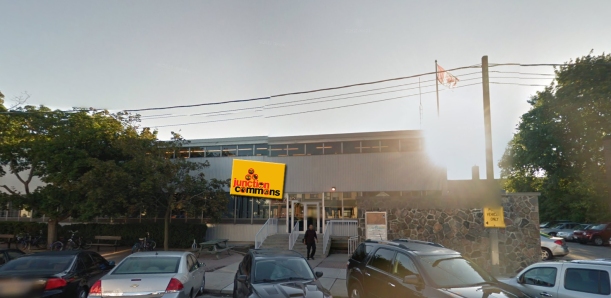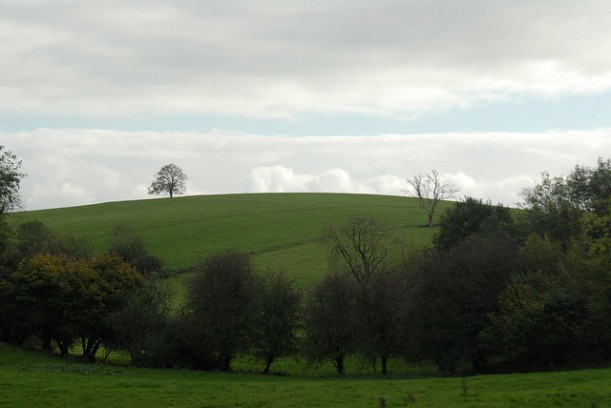On Wednesday April 16, I attended a townhall meeting about the ‘Junction Commons,’ a proposed community space on the site of a vacant police station in the Junction neighbourhood of Toronto. A volunteer task force has been developing a vision of the Junction Commons, collaboratively, over the past 18 months. Even as some members have come and gone, the idea has carried itself along. The current vision for the site is a building which contains accessible public space for events, programs and socializing with one floor of revenue-generating rental space that will cover the costs of the entire building.
The Junction Commons task force won a Trillium grant to hire Urbanmetrics and ERA architects to complete a feasibility study. The big news at the recent Town Hall was that the study (which should be available on the JCP website soon) found that it would be possible to renovate the building to create both community space and income-generating rental space. The study also concluded that the rental income would be sufficient to cover the building’s maintenance and staffing costs and pay off a bank loan for the renovations (app. $3.5 million). Because it would be difficult to cover the costs of purchasing the property outright and still maintain sufficient public space, the task force is currently negotiating a long-term, low-cost (like $1 a year low) lease from the City of Toronto.
The task force envisions the Junction Commons as a community hub. Referring to earlier research on Community Hubs, the JCP task force described a community hub as a space which intertwines the following objectives: service delivery, place-making and community building. The Junction Commons will be a place where people can obtain services, a space that’s comfortable and attractive, and a space where local people can gather, get to know one another and pursue collective objectives. The JCP task force is seeking to make the Junction Commons financially sustainable, so that it won’t be reliant on government funding — a valid concern in these times of global ‘austerity.’
Early renderings of potential designs, produced by Ryerson planning students, were on display at the Town Hall. The task force has also held design charettes with local people throughout the neighbourhood in order to better understand their needs for the space. From the various activities, programs and events suggested in these charettes, the task force developed five ‘pillars’ of the Junction Commons:
ARTS – The Junction Commons will be a site for the discussion, production and experience of theatre, music and visual arts.
FOOD – The Junction Commons will be a place where people can come together to eat and cook. It will be equipped with a community kitchen and host a farmers’ market.
HEALTH – The Junction Commons will be a space for exercise, dance, yoga and a site for the provision of health services. The University Health Network was mentioned as a possible anchor tenant.
COMMUNITY BUILDING – The Junction Commons will be a space for both casual conversations and community meetings.
LOCAL EXCHANGE – The presence of so many different people in the Junction Commons makes it an ideal site for local development and learning. It will be an excellent site for co-working, public lectures, skills exchanges, sharing and local trade.
At the outset, creating a commons requires real initiative and effort from one or more individuals, but as the idea and project grow and more people are drawn in by the vision, the work can be distributed. Hundreds of people have come to JCP meetings and townhalls. Thousands have signed a petition to delay the sale of the property until the completion of the feasability study. It would be difficult, if not impossible, for a for-profit company to produce a space like this. It will be possible to fund the public space within the Junction Commons from rental income, in part, thanks to the efforts of so many volunteers. Eighteen months of planning, design and outreach by a private development company would be extremely expensive — as it stands however, the JCP will only have to cover the cost of the physical renovations. The JCP is currently looking for new volunteers to step up and help to shoulder some of the load. The task force has formed a non-profit organization and will soon be electing a volunteer board. If you live in the Junction – especially if you have legal, marketing or accounting experience — consider becoming a Junction Commoner and volunteering your time.
After the presentation of the feasibility study and the preliminary plans for the space, Vandra Masemann of the West Toronto Junction Historical Society took the stage and spoke passionately about the importance of open and accessible ‘third places‘ — spaces which are neither home nor work — in building a community. As access to schools and churches becomes more tightly controlled, it becomes harder and harder for ordinary people to find places to gather and discuss community initiatives. The self-sustaining, community-driven model developed by the Junction Commons Project is one possible solution to this problem.


